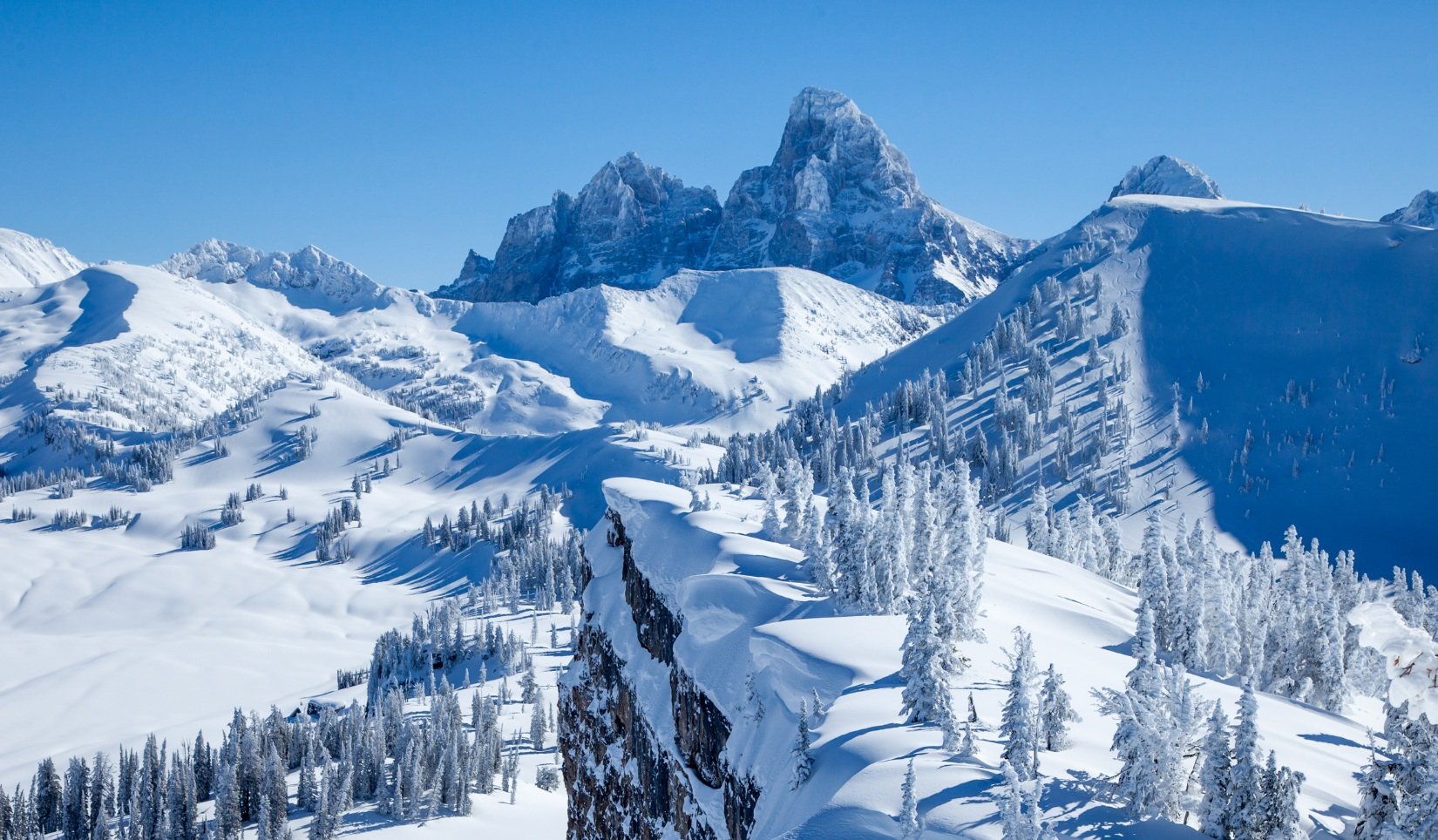
GREATER ENVIRONMENTAL IMPACTS
Howie Garber, Howie Garber Images
Grand Targhee’s proposed expansion is part of a larger development package that will bring significant environmental impacts to our local area, including both the Teton County, Wyoming and Teton County, Idaho communities. Teton County, Wyoming has already approved a Planned Unit Development (PUD) on the 120 acres of private land at the base of the resort, allowing for more homes, resort lodging, and retail space to be built separate from the proposed expansion currently being evaluated by the Forest Service. And, in 1994 the Forest Service approved a new ski lift on Peaked Mountain, which is currently being built. This new lift will increase capacity and skiable terrain within Targhee’s existing boundaries. Indeed, even without any additional action by the Forest Service, Targhee will continue to grow. Additional expansion at Targhee will only compound existing regional growth pressures and bring additional environmental impacts that will affect our communities. Such as: the impacts of development on downstream water quality and stormwater runoff, groundwater supplies, wildlife-vehicle collisions, pollution and energy use, industrial scale recreation on public lands. These are all compounded by climate change, even while the expansion itself contributes to this overarching problem. Already, Teton Valley is experiencing the environmental effects of rapid growth. For example, Driggs’ city-operated sewage plant has been in violation of Environmental Protection Agency (EPA) standards for discharging ammonia well above allowed limits into a small creek which feeds the Teton River.
Howie Garber Images
Targhee’s proposed developments would permanently alter and impact scenic resources located in and around the resort, including Teton Valley’s dark skies. Driggs has a Dark Skies ordinance, and many residents can see the Milky Way from their home. Lights from the proposed restaurant on Fred’s Mountain, night skiing, and snowmaking could be visible from Teton Valley. The proposed expansion would also impact daytime scenery. If the South Bowl Lift is approved, it would be visible from the four most popular trails on the west side of the Tetons. From the peaks of Grand Teton National Park and the Jedediah Smith Wilderness, one would see a ski lift, trails, and a restaurant. Most significantly for the Forest Service’s environmental review process, the Proposed Action would require an amendment to the Caribou-Targhee Forest Plan. An amendment is required to change approximately 900 acres of forest land from a “Visual Quality Maintenance” management prescription intended to protect undeveloped scenery to a “Special Use Permit Recreation Site.” In effect, the South Bowl and Mono Trees areas would no longer be restored, maintained, or enhanced to provide quality scenic settings. Instead, these places will be managed as part of Grand Targhee’s Special Use Permit, without important protections for scenic quality.
The proposed development would also bring noise impacts. First, there will be heavy equipment and helicopter noise for road and lift construction. Once development is complete, noise from avalanche control, lift services, and increased recreation in South Bowl would displace wildlife and ruin the tranquility of the many winter visitors to Teton Canyon. Right now it is possible to hike or ski or snowshoe in Teton Canyon without even knowing that a ski resort is close by.
South Bowl’s south facing slopes and the low elevation Mono Trees may not be skiable in the near future because of climate change. Rather than acknowledge this reality, Grand Targhee is proposing a significant increase in snowmaking - a strain on our limited water supply that may affect agricultural, residential, government, and commercial water users in Teton Valley. Snowmaking is not an efficient use of water. Depending on temperature and wind, 7 to 35% of water used for snowmaking is lost to evaporation. Water use for new homes, hotels, and retail on the private land at Targhee’s base area could have an even more profound effect on local water supplies. And, while man-made snow does eventually melt and enter the water supply, after a season of ski resort activities this water is far less clean than it was when it was pulled from the ground and made into snow. Furthermore, Targhee is seeking to vastly expand its septic system and install several new vault toilets as part of the proposed infrastructure developments and to serve visitors within the expansion area. Not only will new lodges, restaurants, and other development lead to substantially more water use, the disposal of waste and wastewater poses a potential threat to ground and surface water quality in the Teton basin.
It is also possible that sediment from road building and lift construction could affect water quality for the Driggs, ID and Alta, WY municipal water supply, which comes from springs in the Teton Creek drainage. As sedimentation affects the microbiology and oxygen content of streams, it could possibly diminish vital aquatic habitat for Yellowstone cutthroat trout, negatively affecting survival and reproduction downstream in Teton Creek and Teton River. These waterways are also essential drinking water sources for terrestrial wildlife. Runoff and sedimentation from construction and development activities can be mitigated with stringent design standards and careful supervision, but would require that the Forest Service and local governments be diligent in enforcing standards, which will require additional staff and money.
These impacts are in addition to the consequences posed to wildlife, which are detailed in a separate section of this document.
